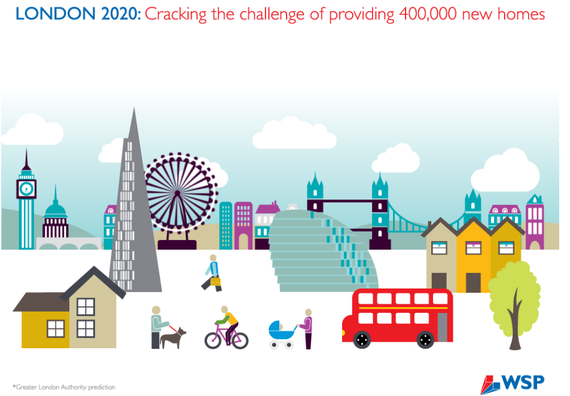In the next 10 years, London will be home to one million more people who will need 400,000 more homes, 450,000 new jobs and will create three million more journeys on our transport network every day.
London Mayor Boris Johnson addresses these enormous challenges in his London 2020 Vision, published this summer. In it he talks about providing 40,000 homes per year, providing new transport infrastructure - much of which we already know about such as Crossrail and the Northern Line extension - committing to locally generated energy and improving environmental factors such as air quality.
To test Boris's Vision, we applied our global expertise in environmental consultancy, development planning and transport modelling and asked, how can we actually achieve these aspirations?
Currently we are only building 28,000 homes a year so to raise this to 40,000 in the short term will require major changes to the planning system to fast-track development. The only way this can be achieved is to give the Mayor greater control of the system, similar to what was done to push through the London 2012 Olympics on time.
Our research also found 60% of the planned housing numbers are dependent on significant transport infrastructure improvements, meaning in the short term, we urgently need to accelerate the delivery of transport infrastructure in order to increase the supply of new housing. We also looked at where homes should be built in the longer term. For example, If homes are planned for outer suburbs and jobs are predominantly planned for central London, it will just exacerbate the transport congestion we already have because everyone will be going the same way at the same time.
If we continue to deliver in this predict and provide fashion without re-balancing our land uses, this will never change. Transport is planned according to projected demand based on assumptions about where development should be happening. Our expert transport planners challenge this strategy, pointing out that historically development has followed transport, not the other way around.
We need to better plan our great city to change the status quo in the future. We need to plan homes closer to jobs, and we need to plan our transport system not just to meet ever-increasing demand but to manage it. We have capacity in the network - just think of the near-empty trains heading back out of central London every morning in peak travel periods - but the capacity isn't used because we have a one way flow from homes to jobs.
Many countries manage demand by encouraging reduced journeys and off peak travel. We have the benefit of a robust tracking system through the Oyster card which could be used to reward 'good behaviour'. If everyone just got off the tube one stop early we could significantly increase capacity in the rush hours.
Boris also talks about 'locally generated energy' as a solution for an inflated population. As with transport, it makes much more sense to drive down usage in the first place than just keep on building new sources to accommodate increasing demand. If the £7billion allocated to building a district heating network was put into retrofitting homes each home in London would have £2000 to spend on better insulation or installing energy efficient boilers. And it would save Londoners £125 off their electricity bills and seven million tonnes of carbon.
Will all of this make the city 'where we can say that of all the big cities in the world, London is the best to live in?'. Well there's some competition on that. But we really hope so.
You can download our analysis of London 2020 Vision here.
